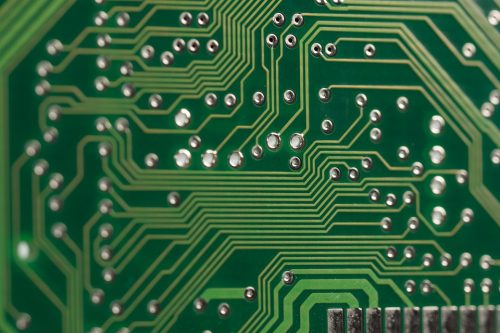The advent of machine learning is increasing the demand for data storage and computation. Today, we face the challenge of the AI era: how to prepare the infrastructure to reliably store big data and efficiently perform large computations. This complex problem is at the intersection of material science and engineering—one that the field of phase-change memory aims to solve.
Modern computers are built using von Neumann architecture. This setup has a central circuit, called the processor, where instructions of the computer are carried out by performing basic arithmetic and logic. Data is shuffled between the processor and storage every time the computer performs calculations. Because this shuffling is energetically expensive, von Neumann computers waste about forty percent of their electrical power by simply moving data around.
Phase-change memory offers promising alternative to overcome this inefficiency. Phase-change memory provides a fast and electricity-free method of storage by using “fifth-generation materials”—which comprise of carbonites, tellurium, germanium and antimony. These materials enable rapid, reversible transitions between an amorphous phase that resembles molten glass and an orderly, crystalline phase, analogous to the 0s and 1s of a typical computer’s binary storage.
Perhaps even more promising is the capacity of phase change memory to allow storage and computing to be performed simultaneously, instead of separating the two as discrete processes, in a process called neuromorphic computation. As a result, the computer can minimize the power lost because it no longer requires moving around data to load memory to the processor. The processor and memory are one.
“This is not just a dream, it is reality,” said Wei Zhang, a professor of material science at Xi’an Jiatong University in China. “Two companies are already selling phase change memory products on the market. It has the potential to revolutionize storage and memory technology, although there is a lot of room for improvement.”
Yale professor of mechanical engineering Judy Cha, whose research focuses on properties of phase-change materials and nanomaterials, added, “We want the device to be fast, but also reliable. It’s a tradeoff—sometimes these are conflicting properties. If you optimize the speed, you sacrifice the reliability,” Cha said.
Noisy data, or data that is distorted by erroneous, irrelevant signals, is an obstacle to obtaining accurate computations because the data we record is a combination of the true signal and its noise. Since current phase change memory devices are limited by noise and drift that damages the precision and consistency of computations, Zhang and his collaborators’ current research aims to address this problem with a novel design called phase change heterostructure. This design uses several layers of alternately stacked layers of phase change materials and confinement materials that limit how much phase change materials change conformations, reducing the amount of noise in the device. Thus, phase change heterostructure is a more reliable architecture for data storage than the current commercially available phase change memory devices. “We improved the circuit performance without changing the circuit setup. We were able to use one memory cell to significantly improve overall performance of the whole chip,” Zhang said.
With advanced microscopy techniques, Cha and her collaborators observed in real-time how phase change materials convert between the materials’ amorphous and orderly phases as the device operated. Antimony, one of the principal ingredients of phase change materials, was found to cause device failures due to dramatic fluctuations during the process of morphing between the two phases.
“The material composition of the device influences its function greatly,” Cha said. “We ultimately want to determine the material composition that can optimize how fast you can encode and read information while also stabilizing the device.”
These findings identify the root cause of device inefficiencies and failures, bringing us a step closer to optimizing phase change devices for commercial use. It is clear that the computers of tomorrow could look and work nothing like the computers we use today. The next generation may take for granted terabyte-scale storage and nanosecond-speed computation in portable devices, all without the need to charge the device for weeks, or perhaps not at all.
Citations:
Ding, K., Wang, J., Zhou, Y., Tian, H., Lu, L., Mazzarello, R., … Ma, E. (2019). Phase-change heterostructure enables ultralow noise and drift for memory operation. Science, 366(6462), 210–215. doi: 10.1126/science.aay0291
Gholipour, B. (2019). The promise of phase-change materials. Science, 366(6462), 186–187. doi: 10.1126/science.aaz1129
Shen, J., Woods, J. M., Xie, Y., Morales-Acosta, M. D., & Cha, J. J. (2016). Structural Phase Transition and Carrier Density Tuning in SnSe x Te1- x Nanoplates. Advanced Electronic Materials, 2(9), 1600144. doi: 10.1002/aelm.201600144
Xie, Y., Kim, W., Kim, Y., Kim, S., Gonsalves, J., Brightsky, M., … Cha, J. J. (2019). Self-Healing of a Confined Phase Change Memory Device with a Metallic Surfactant Layer. Microscopy and Microanalysis, 25(S2), 1870–1871. doi: 10.1017/s1431927619010080
Zhang, W., Mazzarello, R., & Ma, E. (2019). Phase-change materials in electronics and photonics. MRS Bulletin, 44(09), 686–690. doi: 10.1557/mrs.2019.201

